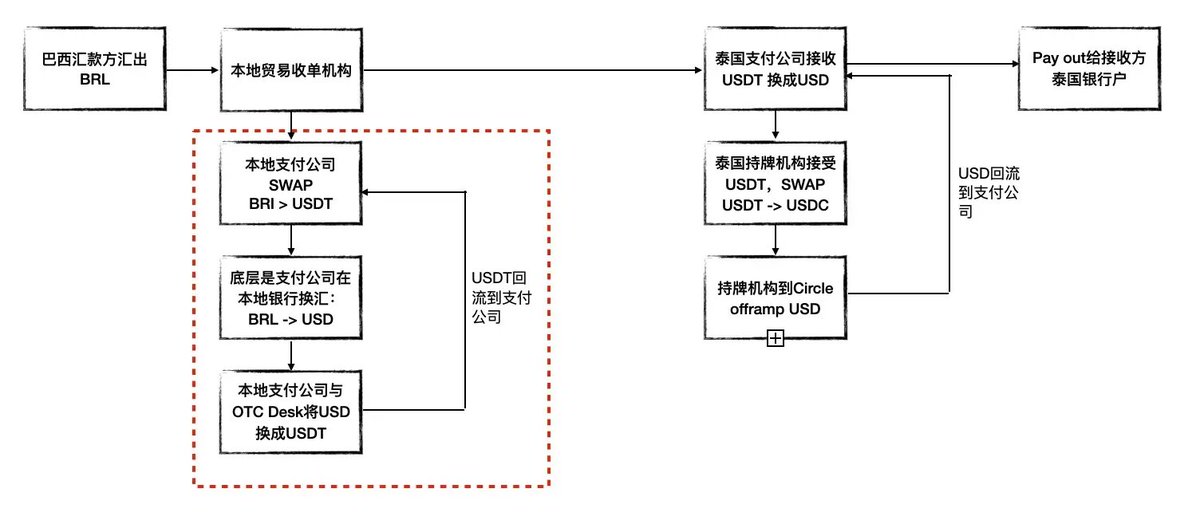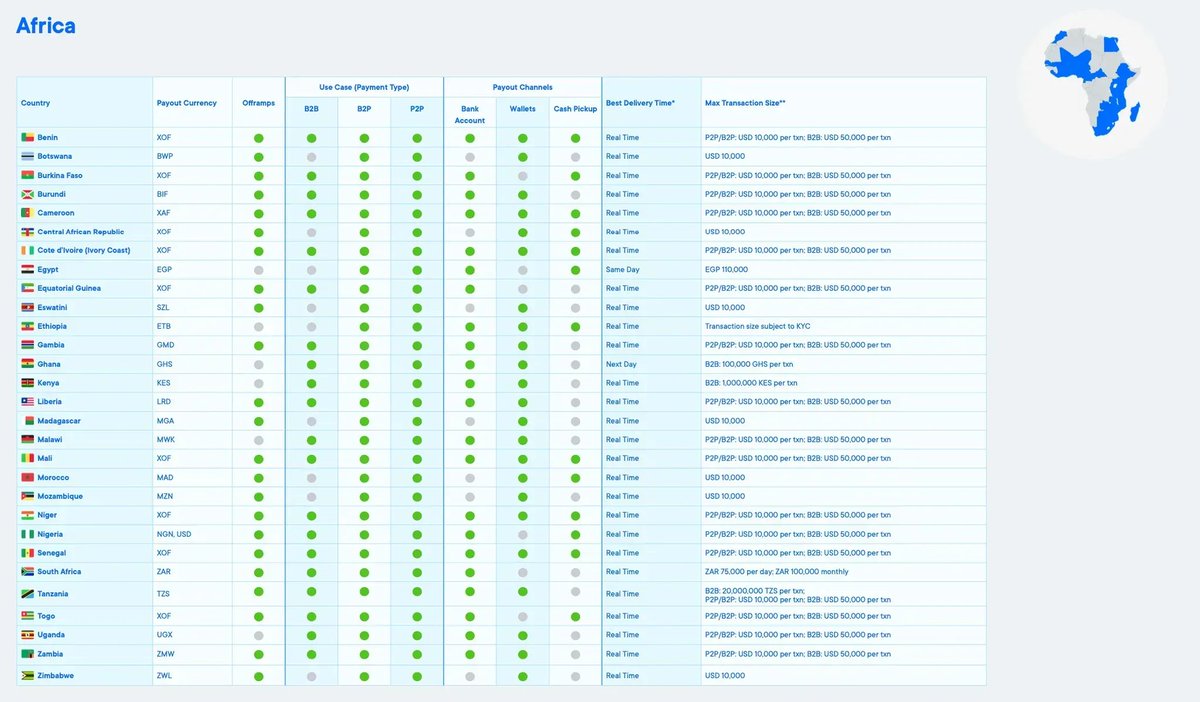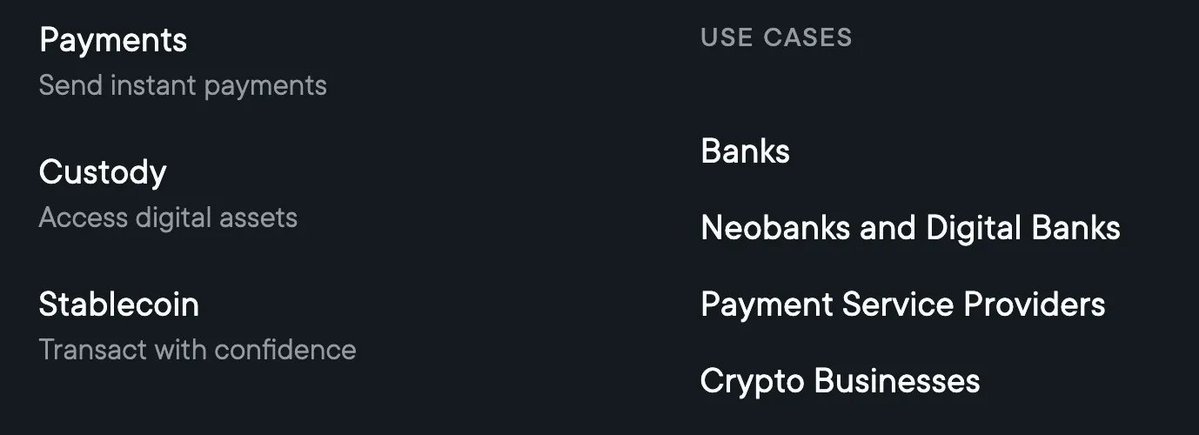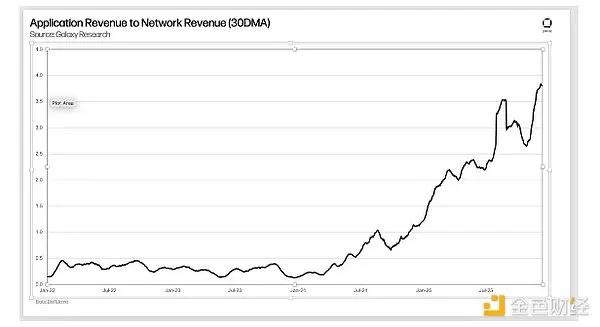Author: YettaS
Yesterday, a single statement by the President caused $XRP to soar, surpassing $ETH in FDV ranking in a short period of time. Although it has long been renowned, few people know what it does. Is Ripple a massive scam? If not, why do we hardly see its real users in our daily lives? What is the actual scale of Ripple's business, and is it sufficient to support its current valuation? If not, what is it relying on?
This article will dissect Ripple's business logic, confront its challenges and controversies, from its cross-border payment innovations to the core role of the XRP Bridge, to help us deeply understand how to turn "populism" into a grand feast of capital and technology in this industry.
What Kind of Business is Ripple?
Ripple's business is cross-border payments. The traditional cross-border payment process is divided into information flow and capital flow. At the information flow level, SWIFT unifies the standards of various remittance countries; at the capital flow level, it is completed by the remitting bank and the receiving bank, and if there is no direct relationship between the two, it needs to be transferred through correspondent banks or central banks, with most capital transfers requiring multiple intermediary banks. This results in: 1. Long processing time, 2. High costs, and 3. Low transparency.
Crypto is very suitable for solving capital transfers and settlements.
Let's first talk about the solution under stablecoins: local OTC/payment companies receive foreign exchange, and they exchange it for USD at banks. The USD needs to be exchanged for USDT through OTC providers like Cumberland, and then the USDT is transferred on-chain. At the receiving end, the USDT also needs to be converted back to USD through OTC, and then exchanged through banks into local currency. In this solution, the transfer and settlement of USDT becomes very simple, but the key challenge and moat is the entire OTC network. If it's USDC, the process will be more convenient, as direct on/off-ramps can be done at compliant venues with Circle.

Ripple is actually a simpler solution than stablecoins. Its process is that foreign currency is exchanged for XRP through local banks or payment institutions at CEXs, the XRP is sent to the receiving country's CEX, and then the XRP is exchanged for local currency. In other words, Ripple has recreated a foreign exchange market using XRP as a bridge currency.

Ripple has actually provided a very clever and efficient cross-border payment solution. In traditional SWIFT or stablecoin cross-border payment scenarios, capital occupation has always been a pain point. Each time an exchange is made, banks or OTCs usually need to pre-inject sufficient funds into the account to ensure the entire payment process goes smoothly, such as banks needing enough USD for exchange, and OTC merchants needing to pre-hold USDT. This pre-funding not only is cumbersome, but also greatly reduces the efficiency of capital utilization. But Ripple's advantage lies in its clever use of the liquidity mechanism of CEXs, avoiding this pain point of pre-cash placement. By directly exchanging assets on CEXs, this is the On-Demand Liquidity it has proposed.
What are the Keys to Recreating this Foreign Exchange Market?
Ripple is not just doing an ordinary business, it is more like pushing for a brand new cross-border remittance model. From a compliance perspective, the policy environment and tradable modes vary across different regions, and Ripple, through its own efforts, is trying to single-handedly drive this new market transformation.

In Ripple's development path, there are two key factors:
Bank BD: Getting banks to be willing to use the XRP cross-border payment solution.
CEX market depth: Ensuring that the XRP trading markets in each region have sufficient liquidity to support global currency exchange.
Ripple has not been idle in this regard.
First, let's talk about the first point. Before 2017, Ripple was not directly involved in too many currency-related businesses. Its original goal was to replace SWIFT, relying on the advantages of the information layer, and to collaborate with many banks to promote the education process in the market. In this way, Ripple has gradually made the major banks in various regions its strategic partners. For example, in September 2016, SBI (Strategic Business Innovator) acquired a 10.5% stake in Ripple for $55 million. In the same year, Ripple also received investment from SCB (Siam Commercial Bank). By 2017, Cuallix became the first financial institution to try to promote XRP as a bridge currency, and with the pandemic, the business using XRP as a bridge currency has been widely deployed.
This also explains why it is difficult to find real use cases of Ripple, because Ripple's cross-border payment solution does not directly expose to ordinary users or merchants. It mainly operates through the channels of banks, and the merchants or remittance recipients do not need to know the payment route behind the bank. In fact, as long as banks are willing to allocate a small portion of their business to Ripple, it is enough to support the entire business model.
Now let's talk about the second point. Ripple must establish a globally distributed CEX network to ensure the trading depth of XRP, with 7*24 hours of tradability, small slippage, and smooth deposit and withdrawal. Ripple has also put a lot of effort into this end. For example, in 2019, Ripple invested in Bitso, the first CEX in Mexico, and gradually expanded its market influence to Brazil and Argentina. At the same time, the mainstream exchange Coins.ph in the Philippines became Ripple's authorized partner, becoming its "Preferred CEX" for XRP payment, further enhancing Ripple's market penetration.
Ripple is actually a highly BD-driven business, and a quick look at LinkedIn will reveal that Ripple has a large number of BD and Marketing teams, all with consulting and investment banking backgrounds. This is a game that ordinary people cannot sustain.
How Well is Ripple Doing This Business?
In 2023, the global cross-border payment volume is about $190 trillion. In comparison, Ripple's cross-border transaction volume to date is about 35 million transactions, with a transaction volume of about $70 billion, which is just a drop in the bucket compared to the global cross-border payment volume.
I interviewed a local OTC merchant in Latin America, and their annual cross-border transaction volume is around $10-15 billion, and this is just an ordinary OTC desk. Compared to the market influence of stablecoin payments, Ripple's transaction scale is also negligible.
According to industry practice, the cost of cross-border payments is usually between 1%-2%. Based on this, if Ripple relies solely on cross-border payment business revenue to be profitable, it is clearly a drop in the bucket.
Moreover, in the early days, Ripple had to provide a lot of subsidies to get banks and payment companies to use its solution. For example, in 2020, Ripple paid $15 million in subsidies to the former second-largest remittance company MoneyGram in a single quarter to incentivize them to use the Ripple network.
Ripple's Next Steps - Expanding Custody and Stablecoins
Unlike Tether, which directly leverages the global liquidity of the US Dollar to drive the expansion of US Dollar hegemony, Ripple's ecosystem is entirely dependent on its self-built network and alliance building to maintain, which is an obvious bottleneck for its payment business. Therefore, Ripple also needs to think about how to break through this bottleneck. Leveraging its enterprise-side customer advantages, Ripple has chosen three business lines for expansion - Payment, Custody, and Stablecoin.
In May 2023, Ripple acquired the Swiss custody provider Metaco for $250 million.
In June 2024, Ripple acquired Standard Custody. Standard Custody holds nearly 40 money transmission licenses in the US, the Monetary Authority of Singapore's Major Payment Institution (MPI) license, and is registered as a Virtual Asset Service Provider (VASP) with the Central Bank of Ireland. Its CEO, Jack McDonald, also serves as Ripple's Senior Vice President of Stablecoins, which is effectively paving the way for Ripple to issue its own stablecoin.
In December 2024, Ripple officially launched the RLUSD stablecoin and received approval from the New York Department of Financial Services (NYDFS).

At this point, Ripple can be viewed as a normal Fintech company with three clear business lines.
How Crypto Helped Ripple
If the core business itself doesn't generate much profit, then what is Ripple's main source of revenue? The answer is simple: selling Bits.
Ripple's long-running lawsuit with the SEC was precisely due to the sale of Bits. The SEC accused Ripple of selling over $1.3 billion worth of XRP to 1,278 institutional investors to fund the company. The SEC considered XRP to be an unregistered security, which violated federal securities laws, and demanded that Ripple pay a fine of up to $2 billion. Eventually, in August 2023, the court ruled that Ripple only needed to pay around $125 million, but the judge also mentioned that Ripple's "On-Demand Liquidity" (ODL) service may have overstepped its bounds.
Why was Ripple able to sell so many Bits?
As mentioned earlier, On-Demand Liquidity (ODL) is the core of Ripple's cross-border payment solution. As long as XRP's liquidity is guaranteed, all parties involved do not need pre-funding, and can use XRP to facilitate the currency exchange. Based on this, ODL provides Ripple with continuous monetization support, as Ripple itself is the largest holder of XRP. Furthermore, as a bridge currency for cross-border payments, XRP should not be defined as a security, but rather as a currency.
On-Demand Liquidity is actually a very clever three-in-one solution for Ripple's business.
Ripple has tightly bound its business needs with the circulation of XRP. The liquidity of XRP in business scenarios not only provides a foundation for Ripple's narrative, but also makes its operations in the capital markets more adept.
A High-End Financial Populism Experiment
Ripple's business model has gradually shifted from product-driven to capital operations, evolving into a "market consensus-driven" profit model, which is why we jokingly refer to Ripple as a blue-chip meme, only fluctuating with policy tailwinds.
In my view, Ripple's business logic is a sophisticated "financial populism experiment". It attracts mainstream financial institutions' participation by packaging the pain points of cross-border payments, while leveraging the cognitive biases of Crypto retail investors to amplify the strategic significance of its business. This has allowed Ripple's business operations to deviate from the traditional Fintech company's simple "business-driven profitability" path, entering a high-risk, high-return realm that is more dependent on "market narrative" and "capital logic".
We have no way of knowing the original intentions of the project team - whether they are using capital operations to obtain initial funding to drive industry progress, or using a product with some value to play capital arbitrage games. But what is undeniable is Ripple's exquisite mastery of financial populism.
In the financial market, value creation and value perception are often not entirely equivalent, especially in the highly speculative Crypto environment, where "market consensus" itself can constitute a business model, and Ripple is a typical case of this model. It is neither completely dependent on product growth to drive revenue like traditional Fintech, nor purely dependent on liquidity bubbles like pure Crypto speculative projects, but rather skillfully navigates between the compliant financial system, using institutional endorsement to build credibility, while leveraging policies and market sentiment to amplify its narrative.
Is Ripple creating value, or manufacturing belief? The core of high-end financial populism often lies in this ambiguous boundary.







